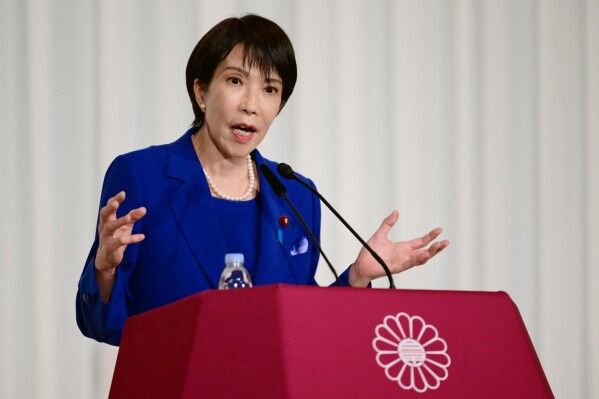Japan’s ruling party has elected former Economic Security Minister Sanae Takaichi as its new leader, setting her on course to become the country’s first female prime minister. But as she prepares to take office, she faces immediate political and economic challenges that could shape her leadership.
Takaichi, 64, was chosen by members of the long-ruling Liberal Democratic Party (LDP) on Saturday. Since the party holds the most seats in parliament, she is expected to be confirmed as prime minister when lawmakers convene in mid-October. Her rise marks a historic moment in Japanese politics, though she was not directly elected by the public in a national vote.
Former U.S. President Donald Trump welcomed her election in a statement on his Truth Social platform, calling her “a highly respected person of great wisdom and strength” and congratulating “the incredible people of Japan.”
A staunch conservative and ally of the late former Prime Minister Shinzo Abe, Takaichi enters office at a time of growing economic strain and coalition tension. She will need to restore public confidence in the LDP, which has suffered consecutive election losses, while tackling rising prices and navigating diplomatic relations—including a possible summit with Trump later this month during his planned trip to Asia.
One of her most pressing challenges is holding together the party’s coalition with the centrist Komeito, which has expressed strong reservations about her ultra-conservative views. Komeito leader Tetsuo Saito warned that his party would not remain in the coalition unless she abandons positions such as regular visits to the controversial Yasukuni Shrine and tougher policies toward foreigners. The 26-year alliance is now at risk.
In her first press conference as LDP leader, Takaichi pledged to strengthen Japan’s alliance with the United States, expand partnerships with South Korea, Australia, and the Philippines, and honor existing trade agreements made under current Prime Minister Shigeru Ishiba’s government.
Behind the scenes, Takaichi is consolidating support within the party. She has leaned on former Prime Minister Taro Aso—one of the LDP’s most influential figures—who backed her leadership bid. She is expected to appoint Aso as deputy prime minister and name his brother-in-law, former Finance Minister Shunichi Suzuki, as party secretary general.
She is also likely to reward key allies who supported her in the runoff vote, including Toshimitsu Motegi, a veteran diplomat and Aso ally, who is being considered for foreign minister.
However, her reported plan to appoint lawmakers linked to past political scandals has drawn criticism from the opposition. Yoshihiko Noda, leader of the Constitutional Democratic Party of Japan, called the idea “totally unthinkable,” reflecting growing public frustration with the LDP’s handling of corruption issues.
Takaichi’s leadership comes at a critical moment for Japan’s political landscape. She must balance ideological convictions with coalition politics, address economic pressures, and rebuild voter trust—all while navigating her party’s internal power dynamics.

